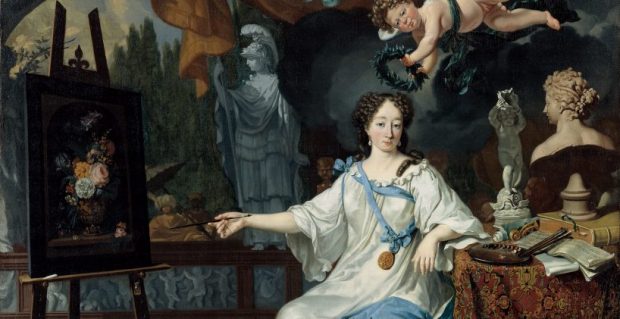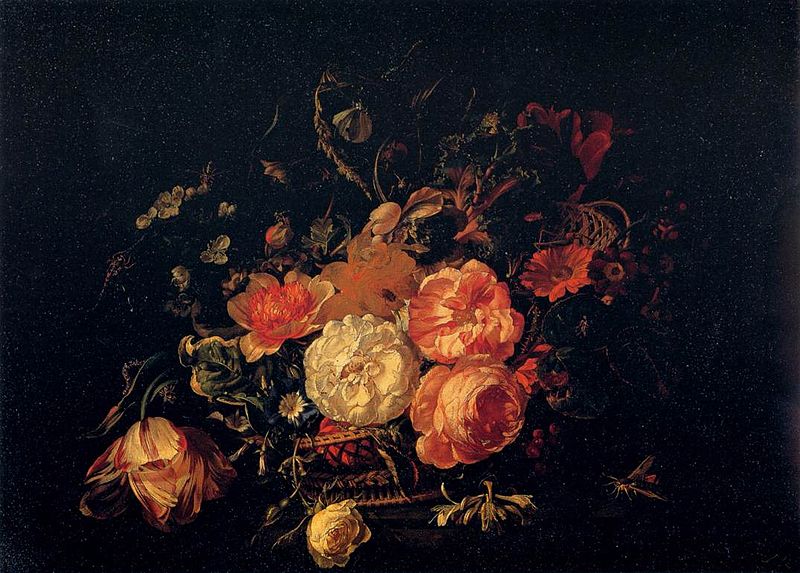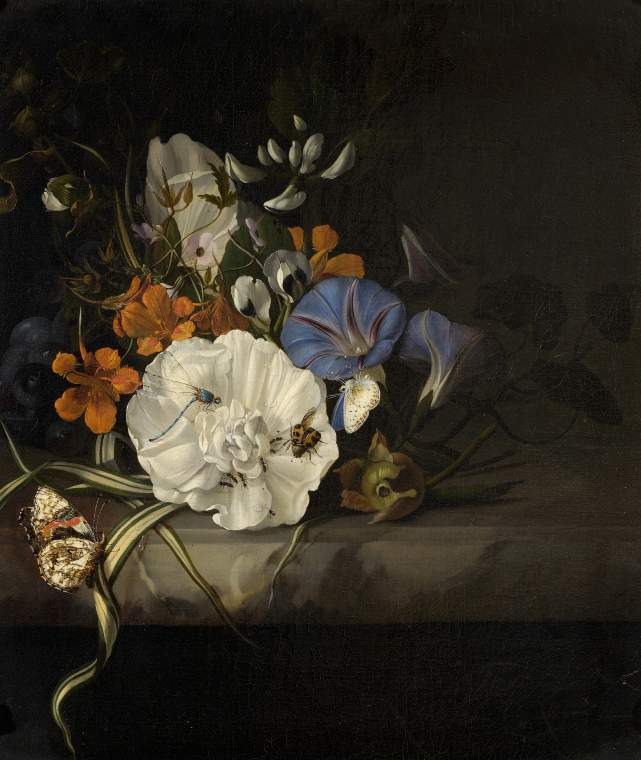Flower Girl: the Brilliant Rachel Ruysch

Michiel van Musscher "Portrait of the artist Rachel Ruysch in her studio" (1675-85)
(3 June 1664 – 12 October 1750)
Until the Dutch were sent mad by tulips, the Dutch Golden Age had Rachel Ruysch to thank for the luscious still life gallery of flowers. Her minute observations of each flower, each stem, each inquisitive insect, in an extremely naturalistic way, but according to an elaborate arrangement or composition, are close to miraculous.

“Roses, Convolvulus, Poppies, and Other Flowers in an Urn on a Stone Ledge” (c. 1680s)

“Still-Life with Bouquet of Flowers and Plums” (1704)
Simon Schama suggested that this flower genre was a product of male oppression: “There were certainly women painters in the Republic, but just as opportunities for women writes and poets were available so long as they obeyed male assumptions about ornamental propriety, so a significant number of successful women artists turned to the genres that were closest to purely decorative skills. It was but a short step from glass engraving and needlework to the kind of brilliant flower and fruit still lifes that made the reputation of Maria van Osterwyk and Rachel Ruysch.”*

“Basket of Flowers” (1711)

“Posy of flowers, with a red admiral butterfly, on a marble ledge” (c. 1700)

“Flowers on a Tree Trunk” (c. 1700s)

“A Spray of Flowers” (c. 1690s)

“Still-Life with Fruit and Insects” (1711)
But whilst any artist is in some way a product of, and fettered or freed by, his or her Age, The Varnished Culture prefers to think of Ruysch as a genius of hers.
[ * Simon Schama, The Embarrassment of Riches (1987), p. 414.]Leave a comment...
While your email address is required to post a comment, it will NOT be published.


0 Comments